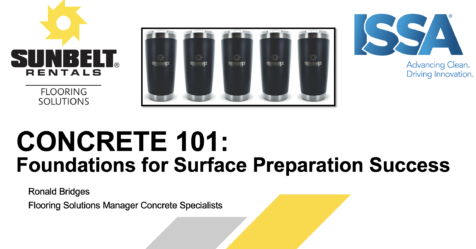Understanding the strengths and weaknesses of your cleaning organization compared to other cleaning businesses of a similar type and size can be a challenge. Even with the wealth of information and research available in the cleaning industry, opportunities to understand exactly how to compare your organization to others are hard to find. Finding a peer group of organizations to benchmark against can be
near impossible.
Benchmarking can provide an independent and objective measurement of how well your cleaning company compares to others. At a basic level, best practice benchmarking involves comparing like for like across an industry. If you want to improve something within your cleaning organization, you can see how your business stacks up against the “standard” and plan out a path for betterment, whether that’s improving cleaning results, cutting costs, boosting efficiency and productivity, or growing the business. Your benchmarking process should look at the components that make up an integrated solution, such as cleaning assessment, training, workloading, leadership, and organizational culture.
Many organizations don’t make any serious attempts to benchmark best practices. They determine how well they are doing by their own internal evaluations. However, self-assessment only leads to incremental improvements based on a limited understanding of what is really possible. Without a more global view of how you compare to other cleaning organizations, it is easy to miss the bigger picture and the wide possibilities
for improvement.
Set the bar
When looking to benchmark with similar organizations, start by asking yourself these questions:
- What quantifiable standards and established cleaning practices do you currently use to run your operations?
- Is the standard based solely on appearance and budget?
- Do you have a scientific method of measuring effectiveness and performance?
If you answered no to any of these questions, then consider the three ideas below to start your benchmarking process.
1. Benchmark at ISSA Show North America 2021. With more than 1,000 industry professionals—including in-house service providers; building service contractors (BSCs); and hospitality, health care, and education facilities personnel—the annual ISSA Show is a great place to start benchmarking. The industry’s largest event offers a conference program featuring more than 80 educational sessions, workshops, panel discussions, training sessions, and certification courses combined. Industry trade shows and events such as this one are great opportunities to find the right people and knowledge to start the benchmarking process. (See page 24 for more on this year’s ISSA Show in Las Vegas.)
2. Benchmark against an existing standard for cleaning. For example, the ISSA Clean Standards are focused on achieving and maintaining an effective cleaning program through a systematic approach and standardized guidelines. As such, ISSA Clean Standards provides facilities with a framework and protocol for using meters and measuring devices along with qualitative methods to measure and assess cleaning effectiveness on a periodic and consistent basis. Perhaps more importantly, the standards provide a structured approach to addressing those situations where a facility’s condition and cleanliness are less than desirable. By assessing cleaning effectiveness, facilities can improve the cleaning process and ensure that a desired level of cleanliness is achieved and maintained.
3. Benchmark your labor using The Official ISSA Cleaning Times resource. Calculating cleaning times, or production rates, can be a difficult task because each situation has so many variables. This newly revised resource provides excellent guidelines for cleaning times, which provide a starting point for preparing bids and estimates for budgeting labor and workloading based on cleaning tasks and the time it takes to complete them. Cleaning times identify efficiencies through increased productivity by using different equipment, tools, and technology. The cleaning times are built using five components: task, tool, time, total units, and training. The Official ISSA Cleaning Times provides a set of average cleaning times for both individual cleaning tasks as well as bundled cleaning processes. The times included in this book were submitted from thousands of different sources and can be used as a benchmark to compare your organization to an industry standard.
Move the bar forward
Benchmarking helps organizations to identify the gaps between their performance and the industry standard and provides ideas on how to go forward. By gathering useful data that an organization may not even know it is lacking, benchmarking can identify specific actions an organization can take to significantly improve its day-to-day functionality.
Remember to follow one simple rule: Be open to looking at what others are doing to achieve their success. Successful organizations have improved their programs in a measurable way by benchmarking best practices with each other.




